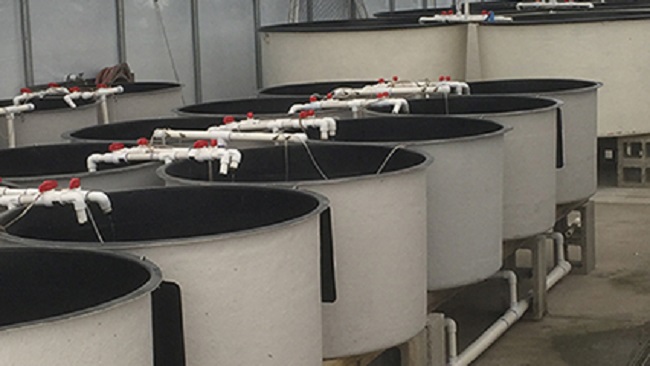
Features
Opinion
Technology
Power Struggle: Think smaller and be smarter
July 4, 2023 By Maddi Badiola, PhD, PM
 (Image: Florida Department of Agriculture and Consumer Services)
(Image: Florida Department of Agriculture and Consumer Services) The first quarter of the year has already gone by. It has been a very busy year in terms of meetings and conferences. Last year, the first one after the pandemic, people showed their willingness to be back in a normal situation (the new normal) but in my opinion, this year has been the one really showing that.
As incredible as it may seem, this year has been the first one I have not been “afraid” of hugging or kissing someone (and believe me I am not a hysteric of the virus at all). I have learned quite a bit about the latest technologies, have networked and contacted lots of people, and of course, had a lot of fun. But, I must admit that I have a bittersweet taste it after all.
The sweetness
Since I like seeing the glass half full instead of half empty, talking with others about energy and being asked about it is already a big achievement.
Here are some examples/happenings over the last year:
- Someone working in one of the biggest salmon producer companies reached out to me requesting my expertise in order to conduct energy audits in their systems.
- There is technology being developed with energy saving algorithms for degassers.
- Some of the vendors and equipment suppliers are aware of the energy importance, and are putting effort in trying to make more efficient devices.
During RASTECH 2023 in Orlando, I spent some time with one of my industry colleagues working on a spreadsheet with regards to energy costs, energy savings, different equipment comparisons. This made me extremely happy. Also, in the Spring issue of this magazine, I was gladly surprised that energy related news was on the front page.
The bitterness
Unfortunately, not all is positive. It is a bit disappointing seeing that the industry has kept on with the same ideas over the years, even though we keep failing (or not having at least the predicted results). “Why are we trying to make the largest farm in the world?” I keep reading this headline in the news.
So far, I may have seen four or five very large farms being built (if not more) and sorry to say, but only one of those could have that title or honour. I wonder if this “size matters” has something to do with men being the ones running the industry? Could be.
Jokes aside, instead of making the largest, what about proving that smaller scale is feasible and profitable? Sustainable is equal to being realistic – realistic with numbers. How many farms are out there projected to produce X number of fish and not being able to achieve those production goals? Should not this be a reason to switch our vision?
Operational expenditure most of the time is not real because, for instance, energy costs surpass any prediction. Also, I have recently learned, that for every pound of fish or seafood produced (or predicted) on the order, US$2 in regulatory issues are required in the United States. Has anybody realized this? Such a number could kill any business plan.
Technical improvement
I guess the most important improvement, and so the most realistic approach, will be taking into account energy as one of the main issues in RAS. Until we internalize that, we will not advance. Other aspects that could help in those savings would be:
Investing in an area where, on average, the optimum environmental conditions (e.g. temperature) are naturally available for the species planned to be produced.
Improving both the system design and management of equipment, such as finding a compromise between an optimal design for water circulation and water oxygenation of the airlift and the backwash and operation of the bio-filters.
Minimizing height differences between RAS components (i.e. low head RAS). RAS should be designed to minimize lifting of water when possible.
Land or building prices may outweigh the advantage of spreading out horizontally. However, more “vertical” systems may come at the expense of higher pumping costs.
I realize that the last two bullet points are difficult. Land is either expensive or missing. CAPEX wise this is something that should be studied; maybe investing more in land would help decrease OPEX which is really what makes farms struggle. Some would say investing in land is less risky than investing in RAS technology.
Lastly, I could not end this article without mentioning the popular topic of artificial intelligence (AI). Not very keen on it but sufficient to know that processing intense AI algorithms not only needs copious amounts of electricity, but also tons of water to cool the data centres. It is not a secret that training AI algorithms requires insane amounts of energy and uses up an absurd amount of water. Could not be there a connection between new RAS farms and AI facilities?
Recent studies show that in the Basque Country, where I come from, summer days have gone from 90 to 145 degrees F, showing the harsh reality of climate change. This is one of the many examples. It is in our hands to make a change. Don’t just think big, think smartly and efficiently. The investors are here to make money and farmers to produce fish. Size may not be giving profitable results, so let’s think smaller, be smarter.
Maddi Badiola, PhD, PM, is a RAS engineer and co-founder of HTH Full Spectrum (fullspectrumaquaculture.com; HTHaqua.com) in Basque Country, Spain. Her expertise include energy conservation, lifecycle assessments and RAS global sustainability assessments. Email her at mbadiolamillate@gmail.com.
Print this page